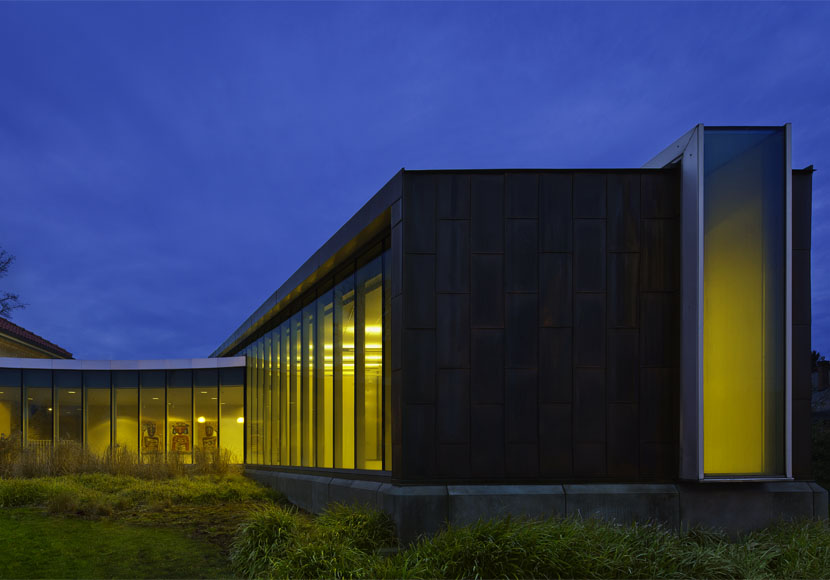Douglass-Truth Branch Highlights
The current Douglass-Truth Branch was expanded and reopened Oct. 14, 2006. The building follows historic preservation guidelines of the original library, which is a city landmark. It has a grand staircase as well as the Soul Pole, a totem pole depicting African-American history given to the Library in 1972 by what was then called the Rotary Boys Club.
History
Serving the Central District since 1914
The Henry L. Yesler Memorial Library opened in 1914. It was the first Seattle branch library not financed by philanthropist Andrew Carnegie. It was named after Yesler to recognize his early efforts to start a library in Seattle.
In 1965 the local chapter of Alpha Kappa Alpha Sorority Inc., a national sorority of Black college women, donated books to launch what was then called the Negro Life and History Collection and is now called the African-American Collection of literature and history.
In 1975 the branch was renamed the Douglass-Truth Branch, after Frederick Douglass and Sojourner Truth.
Architecture

A contemporary design for a historic building
The expanded Douglass-Truth Branch is the 21st project completed under the "Libraries for All" building program.
The addition was designed by Schacht Aslani Architects and built by Construction Enterprises and Contractors Inc.
Art

Paintings, panels and sculptures by multiple artists
The branch features paintings of Frederick Douglass and Sojourner Truth by Eddie Ray Walker, 3-D panels by Vivian Linder and copper sculptures by Marita Dingus, and a Soul Pole from 1972, which was taken down temporarily in 2021 to undergo conservation work. The Soul Pole was reinstalled at the Douglass-Truth Branch in Feb. 2022, and is now prepared to withstand several more decades of exposure to Seattle weather.
Named Spaces
Spaces named for donors include:
- Alpha Kappa Alpha Sorority Inc. Delta Upsilon Omega Chapter Exhibit Area
- Gayton Family Meeting Room
- Rae and Harry Kersch/Schultz Family Foundation Children's Area
- Louise Jones McKinney Reading Area
African American Collection

The collection features more than 10,000 items, including biographies, magazines, literature, music and films. The collection has a strong emphasis on Northwest materials and Seattle-area history with pamphlets, fliers and posters on local leaders and issues. Contemporary titles are regularly added.

